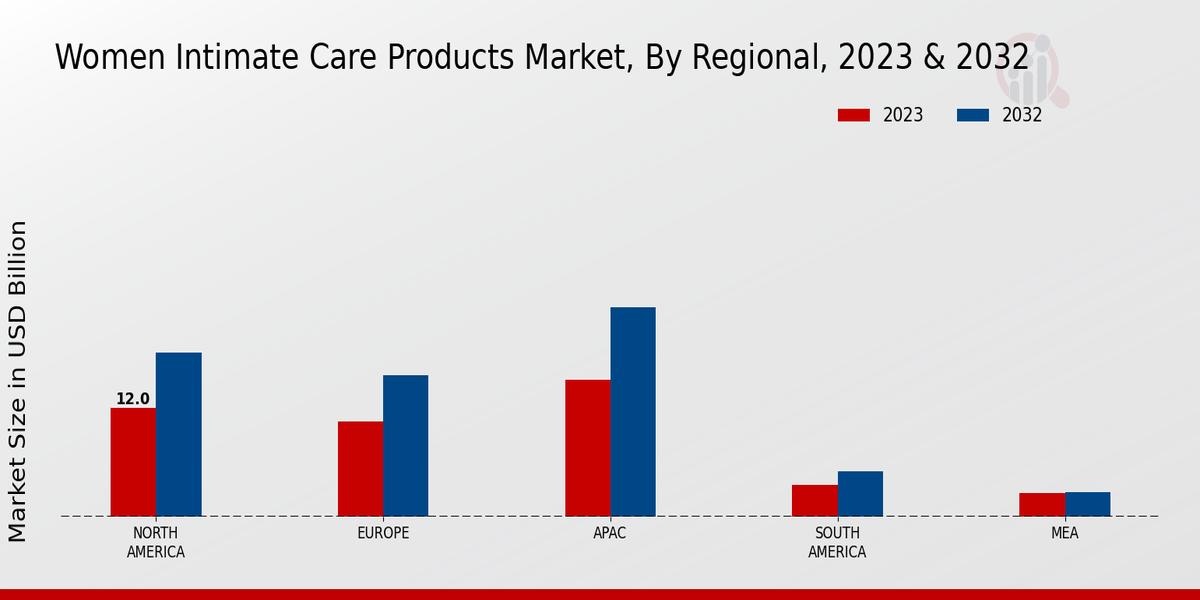E-commerce Growth
The rapid expansion of e-commerce platforms is reshaping the Global Women Intimate Care Products Market Industry. Online shopping provides women with greater access to a diverse range of intimate care products, often accompanied by detailed product information and customer reviews. This convenience is particularly appealing to younger consumers who prefer the privacy and ease of online purchasing. As a result, e-commerce sales are expected to contribute significantly to the market's growth, with projections indicating a compound annual growth rate of 4.51% from 2025 to 2035. Brands that effectively leverage online channels are likely to capture a larger share of the market.
Rising Disposable Income
An increase in disposable income among women globally is influencing the Global Women Intimate Care Products Market Industry. As financial stability improves, women are more inclined to invest in premium intimate care products that promise better quality and efficacy. This trend is particularly evident in emerging markets, where rising incomes correlate with a growing middle class. The market is projected to expand significantly, with estimates suggesting a value of 73.1 USD Billion by 2035. This financial empowerment allows women to prioritize personal care, driving demand for innovative products that cater to their specific needs.
Market Growth Projections
The Global Women Intimate Care Products Market Industry is witnessing robust growth projections, with estimates indicating a market value of 45.0 USD Billion in 2024 and a potential increase to 73.1 USD Billion by 2035. This growth trajectory suggests a compound annual growth rate of 4.51% from 2025 to 2035, highlighting the increasing consumer demand for intimate care products. Factors contributing to this growth include rising awareness of women's health, increased disposable income, and the expansion of e-commerce platforms. These elements collectively indicate a promising future for the industry, as brands adapt to meet the evolving needs of women globally.
Innovative Product Development
Innovation in product development is a crucial driver for the Global Women Intimate Care Products Market Industry. Companies are increasingly focusing on creating products that address specific concerns, such as pH balance, sensitivity, and natural ingredients. This trend is evident in the introduction of organic and hypoallergenic options that appeal to health-conscious consumers. As the market evolves, brands that prioritize research and development are likely to gain a competitive edge. The emphasis on innovation not only enhances product efficacy but also aligns with the growing consumer demand for transparency and sustainability in intimate care.
Increasing Awareness of Women's Health
The growing awareness surrounding women's health issues is a pivotal driver for the Global Women Intimate Care Products Market Industry. As more women become informed about the importance of intimate care, the demand for specialized products rises. This trend is reflected in the projected market value, which is anticipated to reach 45.0 USD Billion in 2024. Educational campaigns and health initiatives are likely to contribute to this awareness, encouraging women to prioritize their intimate health. Consequently, brands that offer tailored solutions are expected to thrive, catering to a more informed consumer base that seeks quality and safety in intimate care.
Cultural Shifts Towards Open Discussions
Cultural shifts towards more open discussions about women's health and intimate care are significantly influencing the Global Women Intimate Care Products Market Industry. As societal taboos surrounding intimate topics diminish, women are more willing to seek information and products that cater to their needs. This change is fostering a more supportive environment for brands that promote their offerings openly. The market is poised for growth as these cultural transformations encourage women to prioritize their intimate health, leading to increased sales and a broader acceptance of various product categories.





















